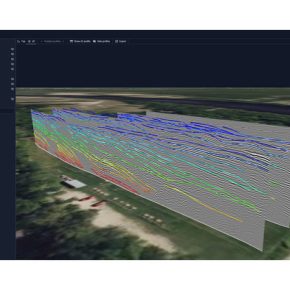Behind the Scenes with GSSI: Our Most Memorable Surveys
As GSSI continues to celebrate its 50th anniversary, we can’t help but look back at where our equipment, customers, and staff have traveled over the years. The survey sites range from ordinary to extraordinary, yet many places stick out in our minds and memories. In a new blog series, our Marketing Coordinator, Jennifer Lighthall, reaches out to our colleagues to ask about their most memorable survey experiences.
Hi everyone! I’m Jen. I’ve been with GSSI for four years, and I’m always so impressed with the stories that my fellow employees share with me about their field experiences. I thought it would be a great time to share some of their favorite field work memories. Like many of you, here at GSSI we’re all getting adjusted to working from home.
In this post, we’ll be featuring three employee stories. Jonathan Brinkmann, Kevin O’Hara, and Ken Corcoran were kind enough to let me virtually interview them. Let’s go!
Jon Brinkmann: Technical Trainer, joined GSSI 2014
JL: Tell us about yourself.
JB: I’m a Technical Trainer at GSSI. I have worked at GSSI for 6 years, but I have 17 years of experience using ground penetrating radar and other geophysical instrumentation.
JL: I’m sure you’ve conducted a lot of surveys over 17 years! What is your most interesting survey that you have been on?
JB: Back in 2009 I performed a GPR survey in Groton, Connecticut at the General Dynamics Electric Boat facility. This is a sprawling site where new submarines are built and active submarines undergo overhauls and repairs. The location of the survey was a drydock currently occupied by the Los Angeles class nuclear-powered submarine USS Alexandria (SSN-757). This is a secure site and no cell phones or cameras are allowed for contractors but imagine a guy with a GSSI SIR 3000 and 1.5 GHz antenna surveying rebar placement with an attack submarine watching over his shoulder!
JL: Wow that sounds awesome, I bet it was cool to see the submarines in action. I wish we could see pictures with the GPR equipment and the submarines but thank you for sharing your story with us.
Kevin O’Hara: Training Supervisor, joined GSSI 2014
JL: Tell us a little about yourself.
KO: I’m the Training Supervisor at GSSI. I have worked at GSSI for 6 years and I didn’t have any GPR experience before I started working here. My background is in Physics though, so I think I had a head start!
JL: What is the most interesting site that you have been on?
KO: My favorite site was in Anchorage, Alaska at the Joint Base Elmendorf-Richardson, where I conducted an on-site training in 2015. I trained a group on the SIR 3000 with the 400 MHz and 270 MHz antennas. The system worked great around the base! We were able to see their targets well and got them up and running with a new device. I couldn’t take pictures of the actual site due to the security.
This was my first time in Alaska, and I was blown away by how stunning it is up there in the summer. The people were very nice, the food was great, and the wildlife was beautiful. I was up there during the end of salmon spawning season, so during some downtime we were able to walk to a site and see some large wild salmon in their natural habitat. It was very cool.
JL: I’ve never been to Alaska but it’s on my bucket list! Thanks for sharing your experience with us!

Ken Corcoran: Product Marketing Manager, joined GSSI 2002
JL: Tell us a little about yourself.
KC: I’m the Product Marketing Manager here at GSSI. I’ve worked at GSSI for 18 great years, but I have 25 years of experience working with GPR.
JL: You’ve worked at GSSI for a while, you must have some good stories. What is your most interesting survey that you have been on?
KC: It’s hard to pick one survey but I think the turtle nest survey that I did for Disney’s Animal Kingdom was, in my mind, the most interesting.
The survey was done at a location on the East Coast of Florida. I worked with a group of biologists that, at that time, had a program in place to increase the survival rate of turtles that nested on Florida’s East Coast beaches. I participated in a feasibility study to determine if GPR could be used to locate freshly placed nests within the beach sand for loggerhead and leatherback turtles.
The reason the Disney’s biologists were trying a new technique stemmed from how difficult it was to locate the nests after they were placed by the turtles. After turtles place their nests, they typically walk around the nest many times to disguise its location in the sand. As you can imagine, a non-destructive method was sorely needed to locate turtle nests in an efficient manner without using shovels.
Once the nests were located, the biologists would then transport the eggs to a nursery center at Disney’s Animal Kingdom. When the eggs hatched, the turtles would get relocated back to the original nest location so they could be released safely to the ocean.
For this survey I used a SIR 3000 and 400 MHZ antenna and created a 3D grid using our quick 3D software.
JL: Such a great study to be involved with, thanks for sharing!




